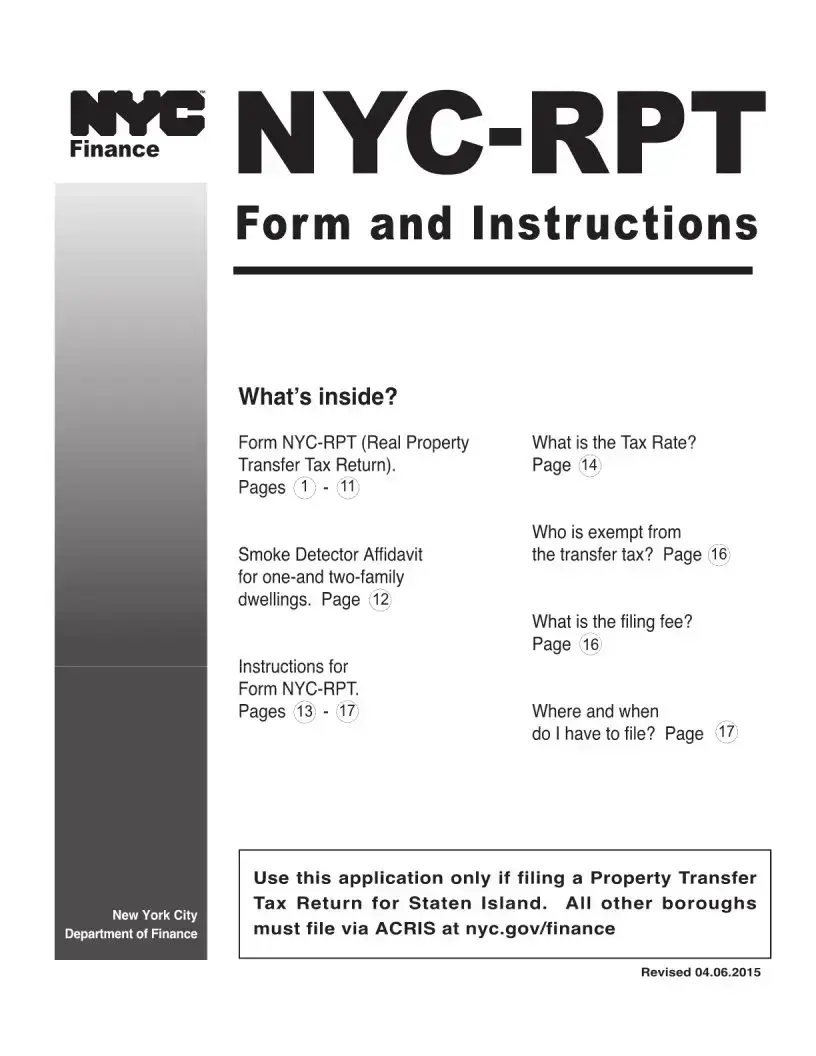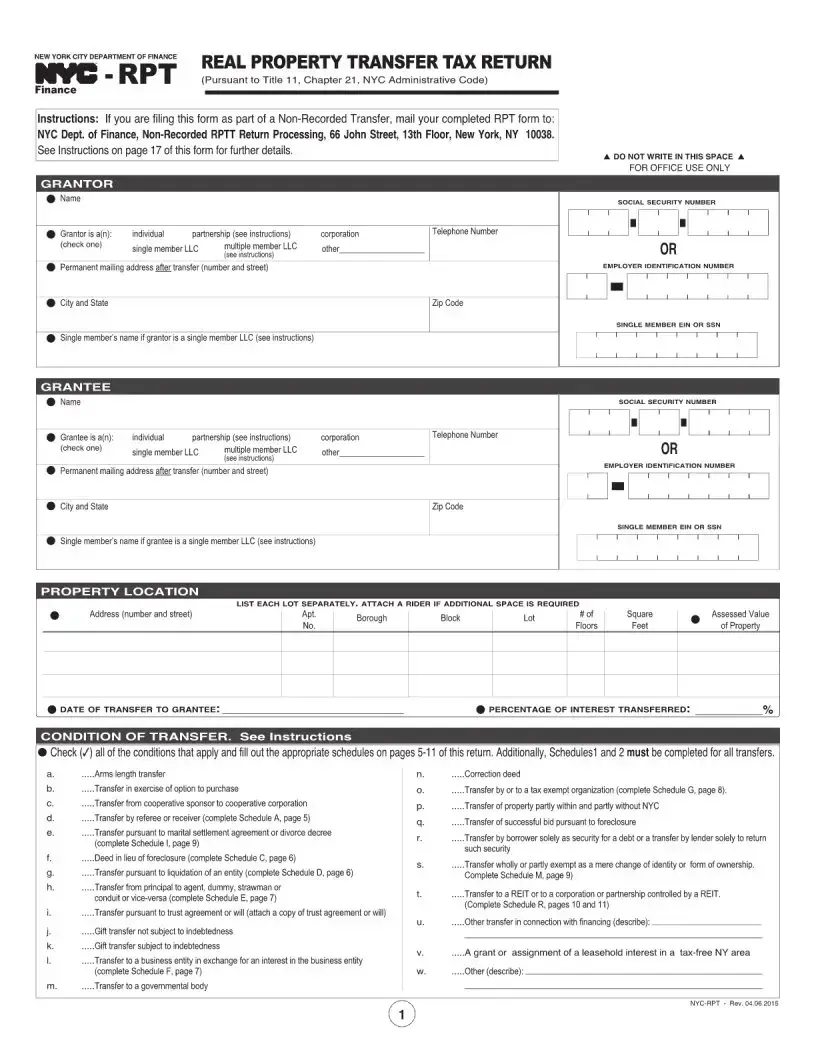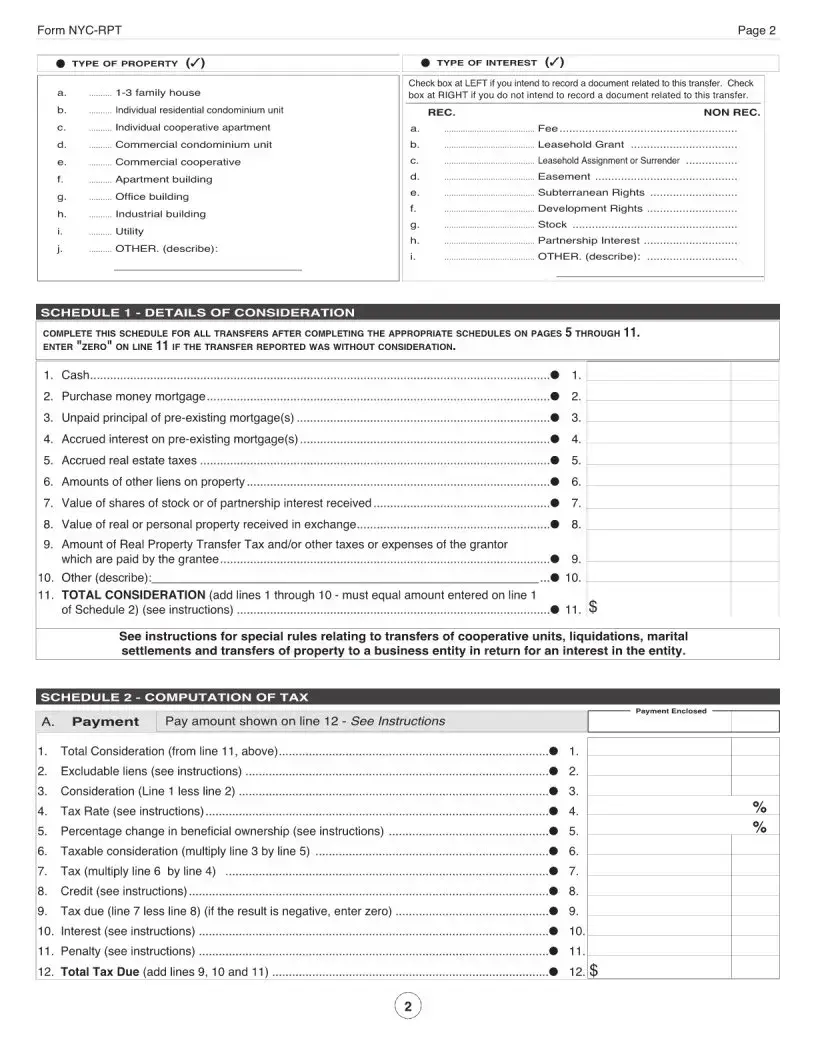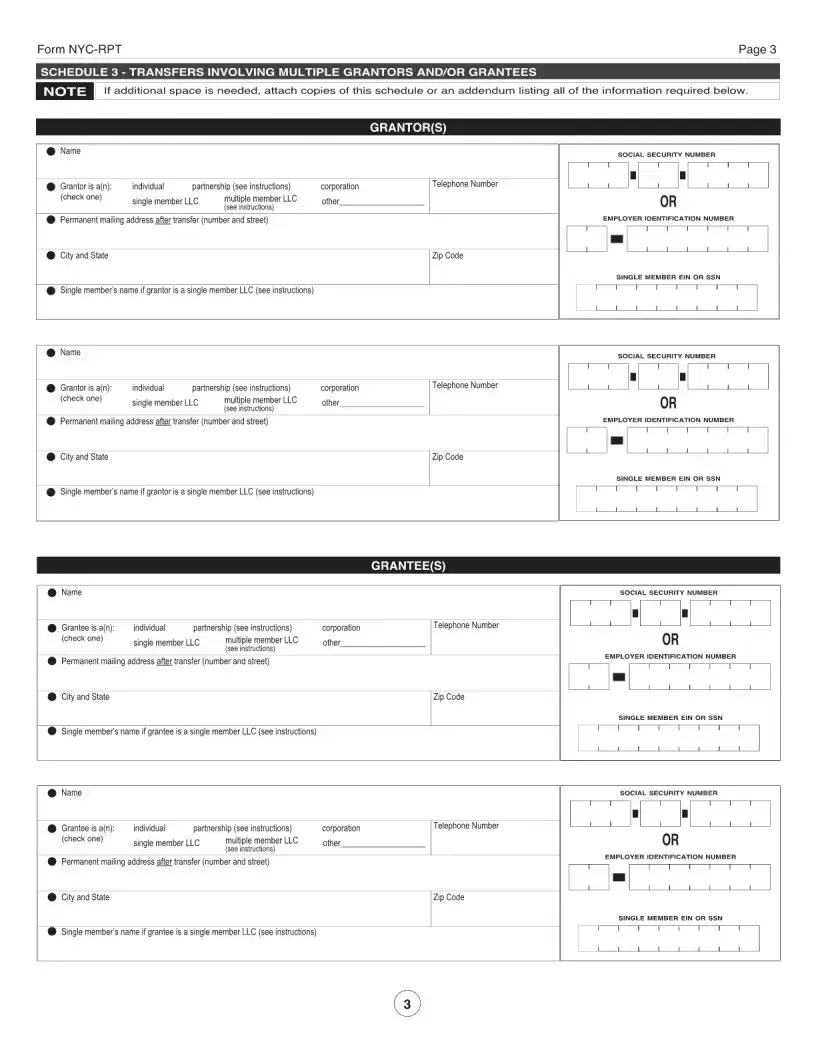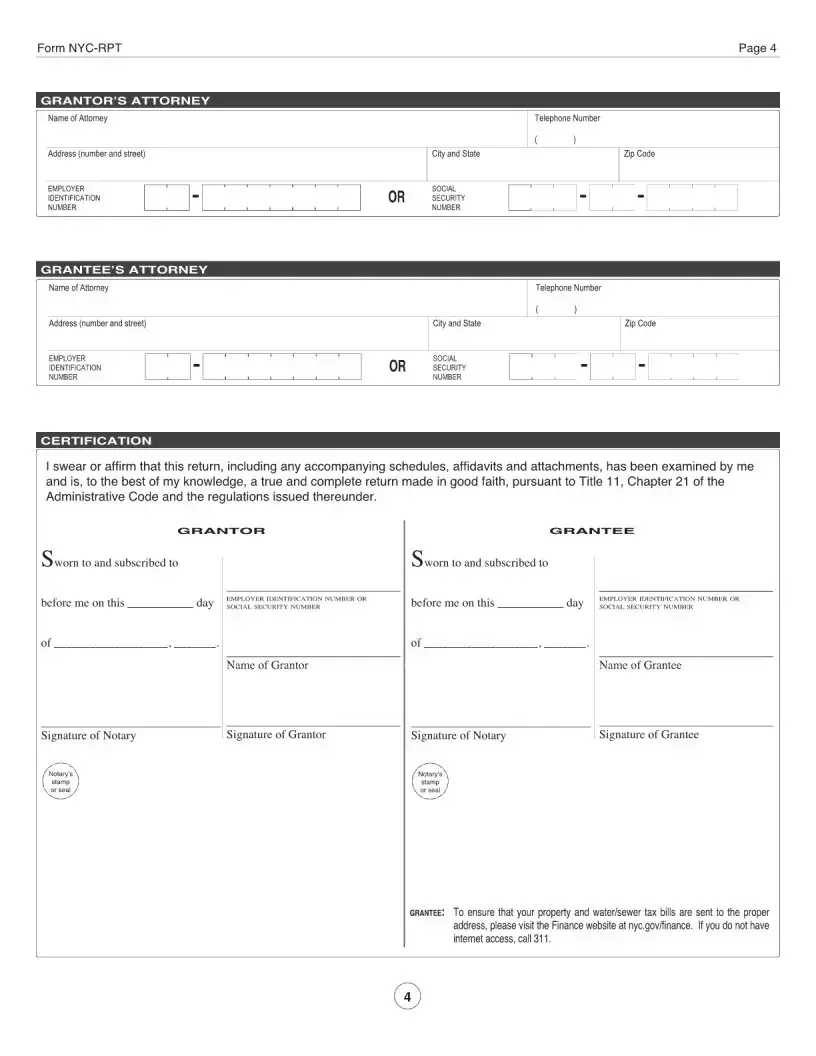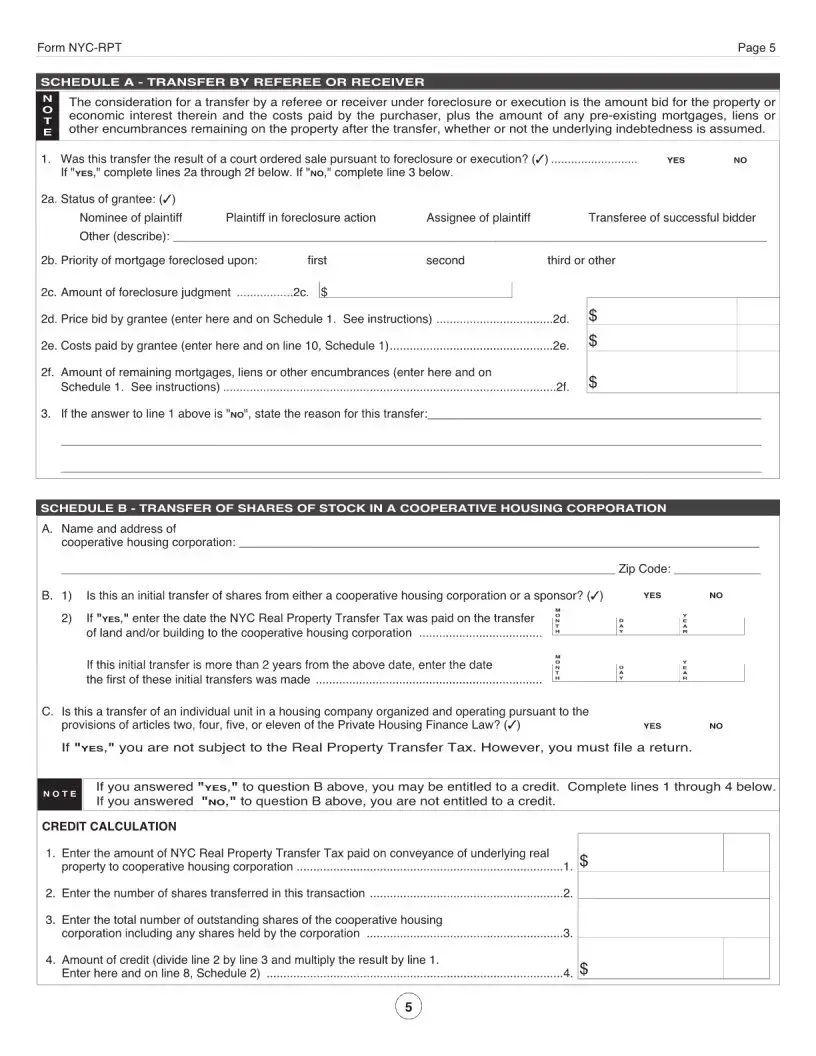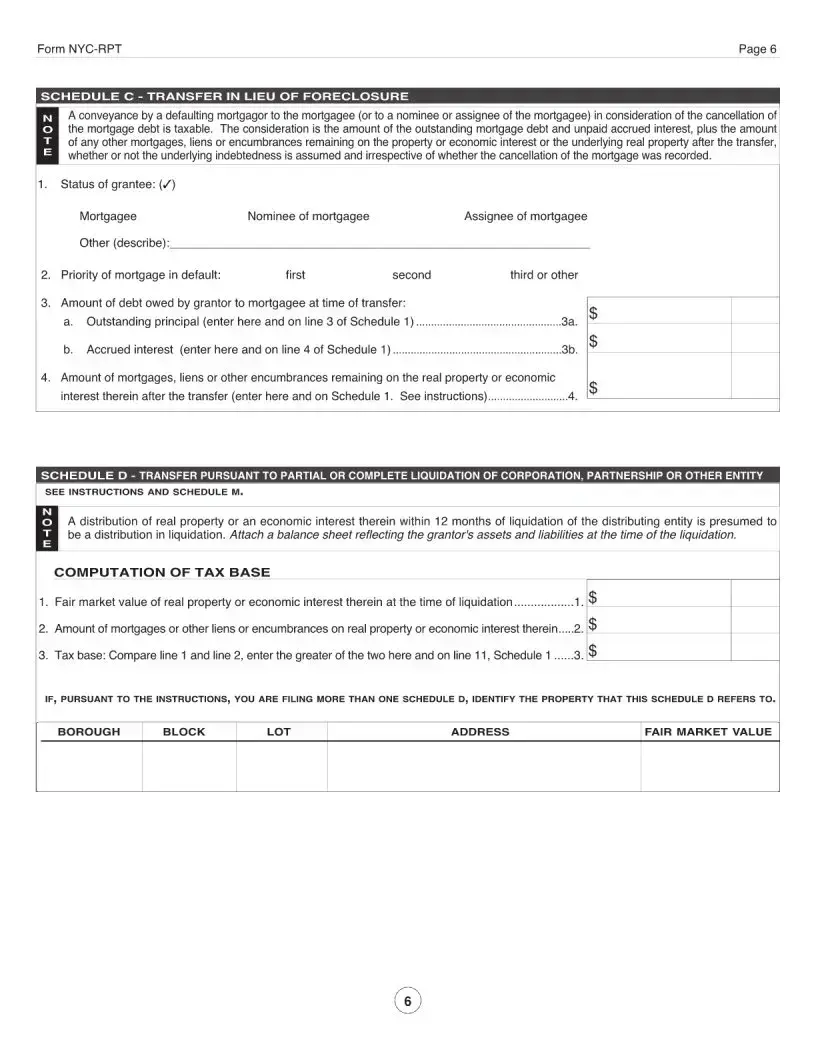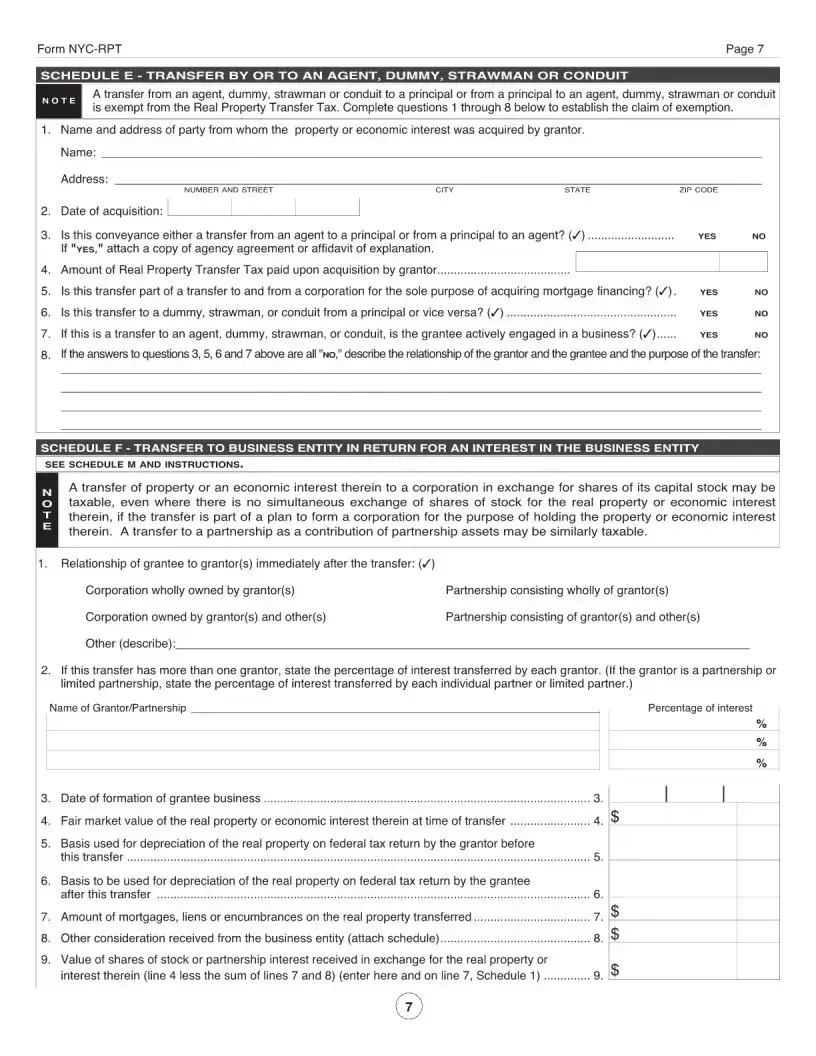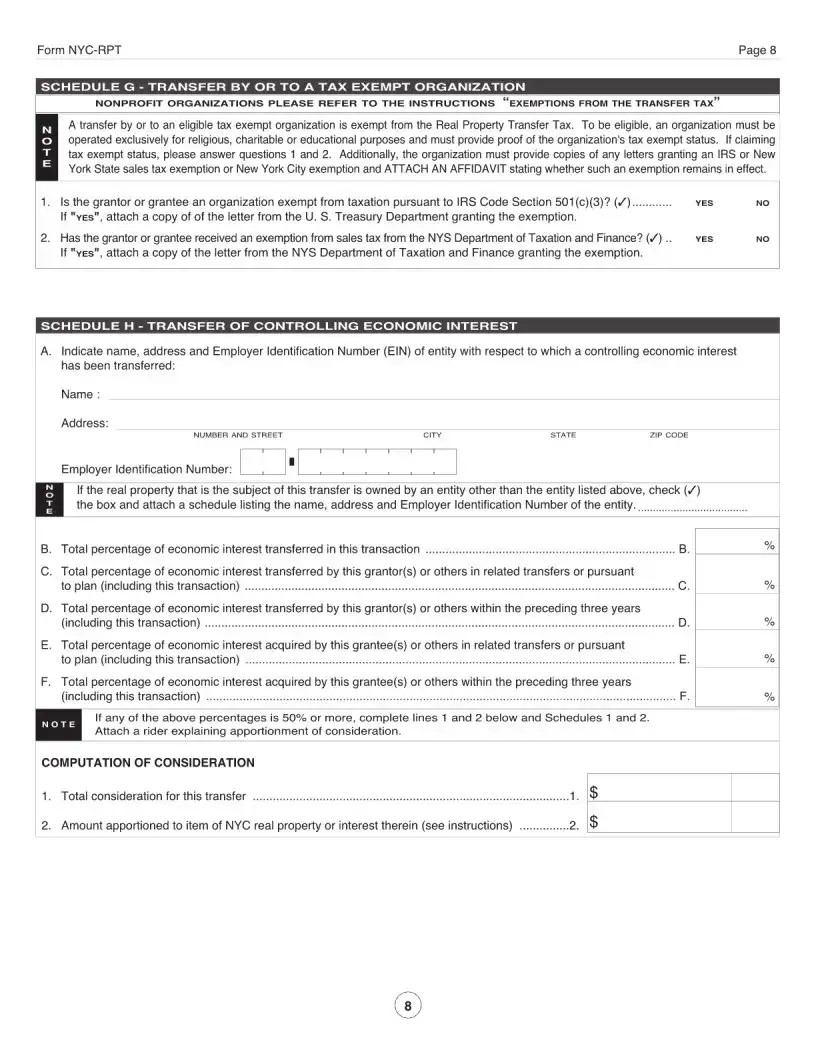In the bustling metropolis of New York City, the real estate market is as vibrant and complex as the city itself. Central to this complexity is the New York City Real Property Transfer (NYC RPT) form, a critical document for anyone involved in the exchange of real property. This form serves various key roles - from the documentation of sales and transfers of real property within the city's limits to ensuring the accurate calculation and collection of transfer taxes. The NYC RPT form is essential not only for legal compliance but also for maintaining the integrity of the city's real estate records. Its implications extend beyond mere paperwork; the form plays a pivotal role in the fiscal health of New York City, directly impacting its capacity to fund public services. For buyers, sellers, and real estate professionals, understanding the form's requirements, the details it must contain, and the deadlines for its submission is pivotal. Through its comprehensive structure, it creates a transparent record of real estate transactions, thereby safeguarding all parties involved while ensuring that the city's tax revenues reflect the dynamism of its property market.
